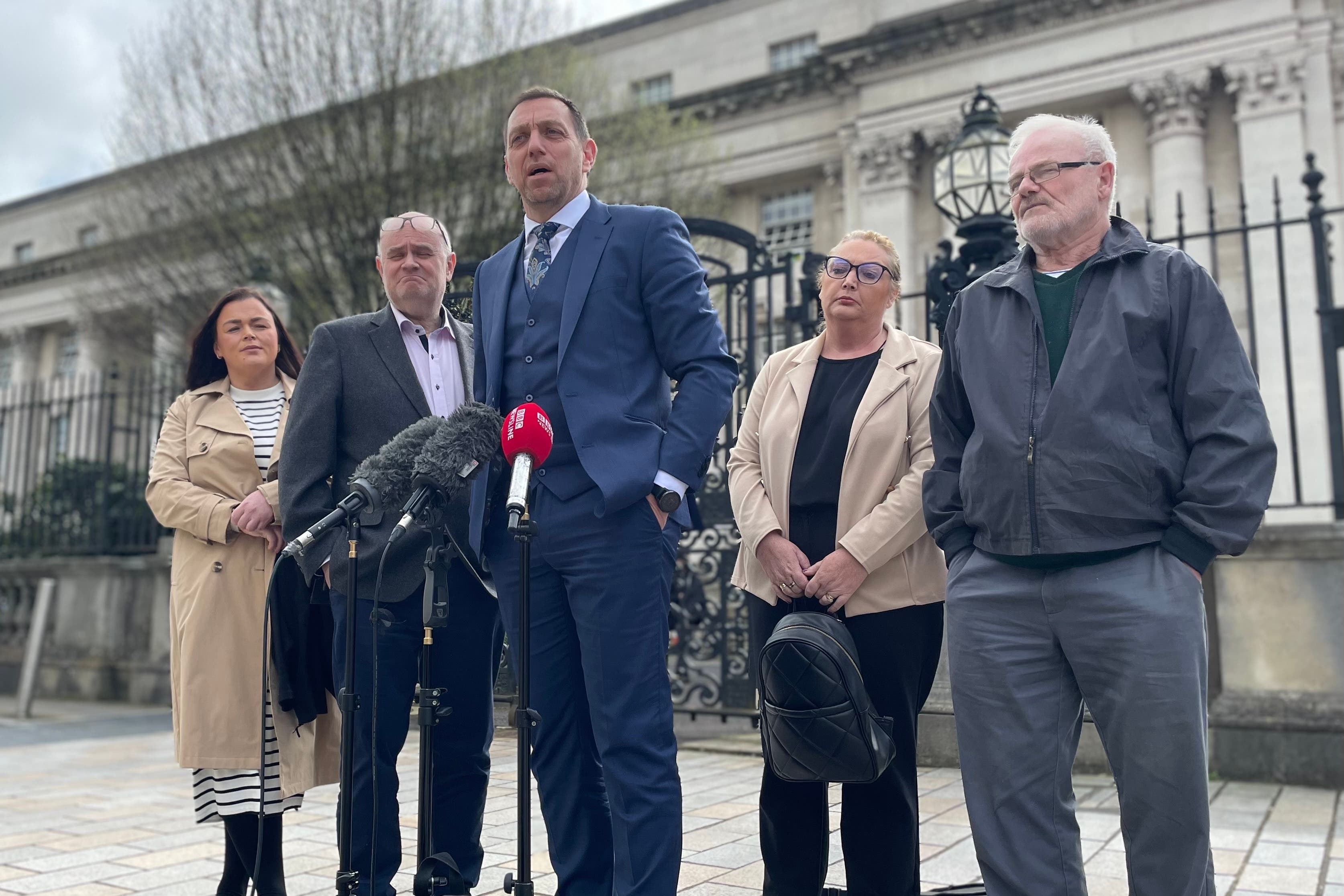‘Kill zone’ set up for the men shot dead by SAS in Coagh in 1991 – solicitor
Solicitor Padraig O Muirigh said the inquest findings back up a belief by the families of a ‘shoot-to-kill’ policy in Northern Ireland.

Your support helps us to tell the story
From reproductive rights to climate change to Big Tech, The Independent is on the ground when the story is developing. Whether it's investigating the financials of Elon Musk's pro-Trump PAC or producing our latest documentary, 'The A Word', which shines a light on the American women fighting for reproductive rights, we know how important it is to parse out the facts from the messaging.
At such a critical moment in US history, we need reporters on the ground. Your donation allows us to keep sending journalists to speak to both sides of the story.
The Independent is trusted by Americans across the entire political spectrum. And unlike many other quality news outlets, we choose not to lock Americans out of our reporting and analysis with paywalls. We believe quality journalism should be available to everyone, paid for by those who can afford it.
Your support makes all the difference.A “kill zone” was set up by SAS soldiers tasked to arrest IRA men in Co Tyrone in 1991, a solicitor has said.
The deaths of Peter Ryan, Tony Doris and Lawrence McNally in Coagh were examined at an inquest which concluded on Thursday.
Delivering his provisional findings at the Royal Courts of Justice in Belfast, Mr Justice Michael Humphreys said he was satisfied the use of force was “reasonable” as the soldiers had an honest belief that it was necessary in order to prevent loss of life.
But he was also critical of the planning of the army operation saying there was an “overwhelming likelihood” it would result in loss of life.
The coroner also criticised the police investigation as “woefully inadequate”, and slammed the destruction by soldiers of an army video and other documentation around the incident.
He further said that rather than condemning the destroying of the video, the response of senior officers in the British Army “has been to excuse, justify and support such reprehensible conduct”.
The army had been tasked to make “hard arrests” following intelligence that a former UDR soldier was to be targeted by the IRA at a car park in Coagh.
On the day, the three men died in a hail of bullets.
Speaking outside court, solicitor Padraig O Muirigh, who acts for the families of Peter Ryan and Tony Doris, contended that a “kill zone” was set up.
“The clients that I represent have always maintained there was a shoot-to-kill policy operating at this particular time, what these findings show is that a kill zone was effectively set up,” he said.
“The planning of the operation was deliberate to avoid an arrest situation, and as the coroner said we had an inevitable outcome.
“Whilst there is disappointment that he has found the force used was justified, we take some positive things from these findings.”
He went on: “What we see in the aftermath is a very clear cover up of that shoot to kill policy, both in terms of how the British Army destroyed a crucial video which would have assisted this coroner and important documentation relevant to the inquest, and as he describes it, the woefully inadequate RUC investigation meant that the full facts would never be before this inquest so that cover up was also a critical part, in my view, of this operation.”
Mr Ryan’s brother Donal contended there were “at least two opportunities to arrest these men”.
“They left it to the last which was the impossible situation where there was no other option but to take lethal force … they brought them into the kill zone where there was no way these men were ever going to survive,” he said.